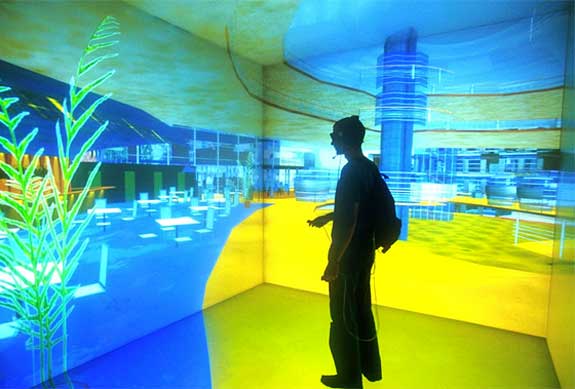HUMANS & VIRTUAL REALITY....
By Archita
@archita_25 (10)
Faridabad, India
September 3, 2014 8:40am CST
Even if you are a computer buff or not there is a hundred percent probability that you will be among the 86% of the world’s population that would be involved in the virtual reality world either through games or practical websites.
Talking about computer games which a major part of the youth are involved in enjoying them is like a parallel universe with characters that they tend to role play. Computer game characters can become more human-like by embracing gossiping and lying, a new study has suggested.
"Imagine computer game characters who are socially intelligent with a natural dialogue, human-like in their ways of relating to others, who gossip, manipulate and have their own agendas," researchers said.
Virtual reality’s literal definition is a computer-simulated environment that can simulate physical presence in places in the real world or imagined worlds.
This is exactly what the games create a physical environment making the user to get involved into it as it was a real world scenario. People get involved in it by making new friends which can be from any part of the world thus creating diversity and a whole new level of communication. Through this medium people get to know about the diversity in their cultures and languages making the whole world come under the same roof of the virtual reality. People have full control of their own virtual world regulating it as per their own moods and wishes.
Furthermore, virtual reality covers remote communication environments which provide virtual presence of users with the concepts of telepresence and telexistence or a virtual artefact (VA) either through the use of standard input devices such as a keyboard and mouse, or through multimodal devices such as a wired glove, the Polhemus, and omnidirectional treadmills. Thus a simple user could be connected to the virtual world by a simple click.
In the fields of education virtual reality is often used to describe a wide variety of applications commonly associated with immersive, highly visual, 3D environments. The development of CAD software, graphics hardware acceleration, head-mounted displays, datagloves, and miniaturization have helped popularize the notion. In the book The Metaphysics of Virtual Reality by Michael R. Heim, seven different concepts of virtual reality are identified: simulation, interaction, artificiality, immersion, telepresence, full-body immersion, and network communication. People often identify Virtual Reality with head mounted displays and data suits. All these notations are what the user experience on a regular basis when they are connected to the virtual world.
The timeline of virtual reality rates back to the 1860s when 360-degree art through panoramic murals began to appear. Then around 1920s the vehicles simulators surfaced. In the year 1950 Morton Heilig wrote an "Experience Theatre" that could encompass all the senses in an effective manner, thus drawing the viewer into the onscreen activity. He built a prototype of his vision dubbed the Sensorama in 1962, along with five short films to be displayed in it while engaging multiple senses (sight, sound, smell, and touch). In 1966 the first flight simulator was introduced by Thomas A. Furness III. Then the head mounted displays were developed by Ivan Sutherland, with the help of his student Bob Sproull. And henceforth the development of the term virtual reality continued with various contribution made by the developers from all over the world.
Virtual reality finds its use in various fields such as heritage & archaeology, fiction, motion pictures, games, fine art, music, therapeutic uses and training. Thus virtual reality has its own world of uses involving almost all the fields that the human life touches.
Virtual reality technology faces a number of challenges, most of which involve technical matters and Simulation sickness due to virtual reality. Users might become disoriented in a purely 'virtual' environment, causing balance issues; computer latency might affect the simulation, providing a less-than-satisfactory end-user experience; the complicated nature of head-mounted displays and input systems such as specialized gloves and boots may require specialized training to operate, and navigating the 'real' environment (if the user is not confined to a limited area) might prove dangerous without 'external' sensory information.
Thus as it is said the coin has both sides the term virtual reality also has its own pros and cons but when weighed the positive side is considered to be more heavier. At the end I would say that the development in the field of virtual reality has just started there is a long way to go and as technology improves virtual reality would be considered as a major part of the normal life routine.
(IMAGE SOURCES :google images)
No responses





